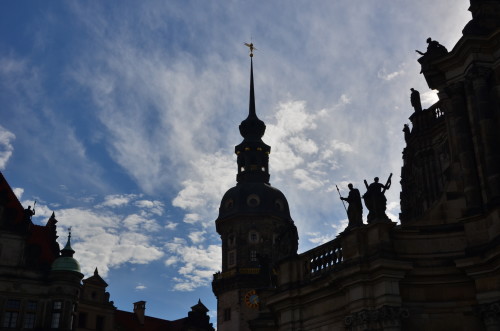
I’ve been holed up in Berlin working the past couple of weeks. Before that, you might remember, I was chilling in Zurich Switzerland. I therefore haven’t done a lot of “traveling” lately, even though I am still abroad.
I broke my proverbial travel fast earlier this week with a day-trip to Dresden, which was the capital of the Kingdom of Saxony prior to the unification of Germany. 
The purpose of my trip was visit two girls I’d met during my three weeks in Colombia back in May. I had no particular expectations of the city.
Needless to see, I was stunned by Dresden. If you find yourself in Berlin — or any city in the eastern part of Germany, for that matter — I promise you that even a short excursion to Dresden is well worth your while.
Dresden quickly becomes apparent as you walk out of Neustadt (new city) toward its historical center
I was initially let down by Dresden, having arrived on a gloomy afternoon to a train station in a particularly dull part of town. “Wait until you get to the old city,” my friend Jenne advised me over coffee, while we waited for the rain to stop, “before you make up your mind about Dresden.”
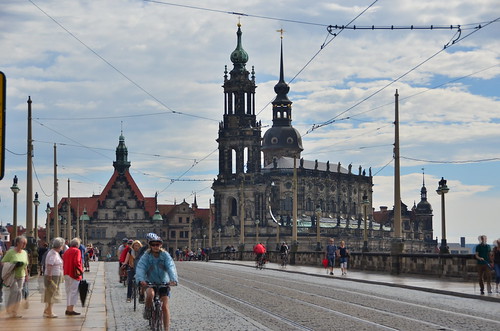
As you cross the bridge over the Elbe River, the scene in front of you evokes Eastern Europe more than Germany
As you walk out of Neustadt (the “new city”) and toward Dresden’s historical center, one of the first sights you see is a solid gold statue of a man on a horse. This is Augustus, Jenne advised me, perhaps the most arrogant of the Saxon emperors who ruled over the Kingdom, which had its capital in Dresden.

Although Dresden has its share of tourists, it’s easy to escape the crowds with a stroll through a tranquil garden
Jenne and I were lucky enough that the sun broke through the clouds right as we walked into old Dresden, bathing its palaces and gardens in glorious sunlight, and highlighting the beauty of the city, which literally took my breath away.
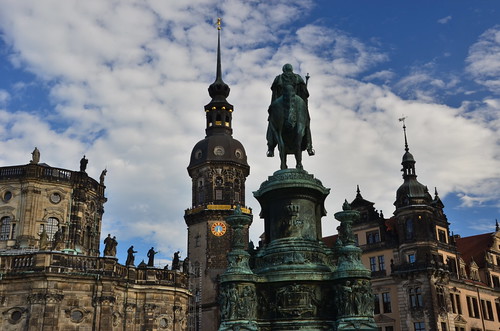
The glory of Dresden’s palaces shines through the scars of World War II bombing
The bad news is that Dresden was among the most-bombed of all German cities during the second World War. The good news is that in spite of this, Dresden’s stunning Baroque architecture (which was, to be fair, mostly by Augustus), has been left largely intact, if a bit worn for wear.
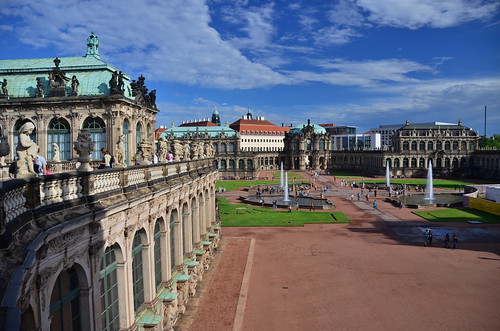
Dresden’s Zwinger Palace gives even the imperial gardens of Paris and Vienna a run for their money
I mean, who would think that a German city almost unheard of outside hardcore travel circles would be so showstopping? I’ll take Zwinger Palace over Versailles or Drottningholm Palace in Stockholm any day, thank you very much.
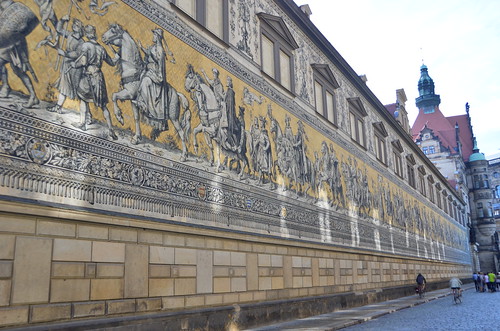
A mural in old Dresden pays homage to the long line of emperors that ruled over Saxony
I was likewise surprised to learn how long of a history Dresden had. A mural at the entrance to the old city stands as a chronological record of the long line of kings and emperors that have ruled over Dresden and Saxony.
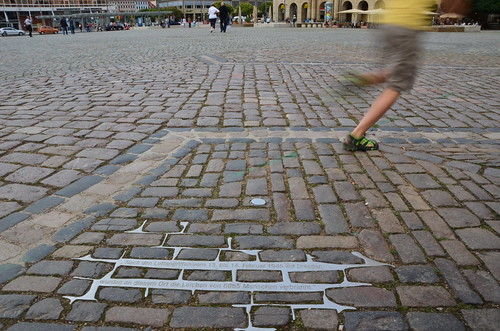
Not all reminders of Dresden’s suffering in the wake of World War II are as in-your-face as the charring of its historical buildings (rough translation: 6,865 people died during the bombing of February 13-14, 1945)
And yet in spite of this grandeur, there’s a sadness that permeates it all. Nobody in Dresden debates or even really discusses the evils inflicted upon the world by their leaders during the war. “But almost a million people died here,” Jenne reminded me as we walked past a subtle memorial to a particularly deadly bombing.

Once you’ve explored the old city thoroughly, compare a model of the current city (pictured above) with how it looked pre-bombing

Robert Schrader is a travel writer and photographer who’s been roaming the world independently since 2005, writing for publications such as “CNNGo” and “Shanghaiist” along the way. His blog, Leave Your Daily Hell, provides a mix of travel advice, destination guides and personal essays covering the more esoteric aspects of life as a traveler.








